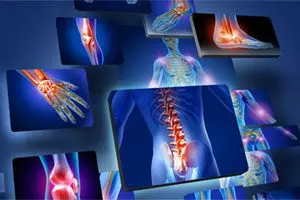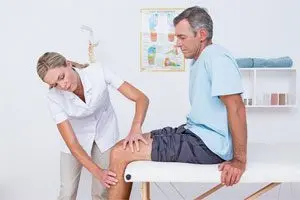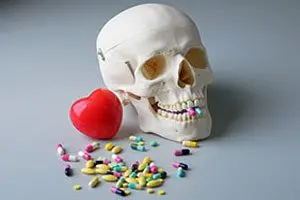Contents
Painful and weakened joints and bones are perceived by many people as a natural sign of aging. However, if you make an effort, you can prevent their premature wear. Prevention of diseases of bone tissue should be dealt with from youth.
Early prevention of diseases of the joints and bones

For a modern person, the problem of early aging of joints and bones is an urgent problem. Most people move very little, eat fast food, have bad habits. In general, a variety of harmful factors affect the body on a daily basis. Therefore, diseases of the joints and bones are diagnosed even in young people.
The skeleton is the foundation of the whole organism. Thanks to the bones and joints, a person moves in space, makes movements. That is why it is so important to take care of their health.
Bone and connective tissue is constantly destroyed and renewed. Normally, a person does not even notice this.
Prevention of damage to bones and joints should be dealt with during the period of time when a person is at the peak of his physical form. Then, when its metabolic processes proceed quickly. This is the only way to slow down the aging of the body.
Causes of depletion of bone tissue and joints

In people of the same age, there is a different state of the articular and bone tissue.
The reasons can be very diverse:
Women’s bones are more fragile than men’s. Their bone mass is 30% lower.
Some people have stronger bones, while others are porous and thin, regardless of gender. This is due to genetic characteristics.
Some people have dense bones because they were better fed during childhood and adolescence.
Affects the condition of bones and joints received injuries and damage. The older the person, the stronger the echoes of the transferred fractures, bruises, etc.
These reasons affect the rate of depletion of bone and joint tissues. When the degenerative process prevails over the process of bone repair, they begin to break down.
For almost all young people, menopause, the age of 65 and joint diseases seem to be something unattainable and very far away. However, youth passes quickly. When the process of bone tissue destruction starts, it will be difficult to stop it. Therefore, it is so important to engage in the prevention of diseases of bones and joints as early as possible.
There are factors that a person cannot influence. For example, osteoporosis develops faster if there is a genetic predisposition to it, if you belong to an Asian or white race. It is impossible to prevent the onset of menopause. However, timely preventive measures aimed at improving the health of bones and joints will avoid serious health problems.
9 Tips for Keeping Bones and Joints Healthy
1. Take a Family History

To understand how high the risk of early damage to the articular and skeletal system is, you need to carefully study the family history. If close blood relatives (parents, sisters or brothers) had similar problems, then the likelihood of developing the same pathology in a person increases.
It is not necessary to find out the presence of health problems during a family celebration. You need to ask such a question to your grandmother or grandfather at the right time for this.
2. Calcium intake

Many people inextricably link the two concepts: “bone health” and “calcium”. In fact, this mineral is necessary for bone tissue, muscles and nerve fibers; without it, it is impossible to maintain hormonal balance in the body. Calcium ensures the stability of blood pressure.
In New Zealand, scientists in 1995 conducted a series of studies. They were attended by women in the postmenopausal period of life. Calcium-rich foods have been found to improve bone density.
However, there are also many studies that refute this information. For example, a 2015 study showed that increasing calcium intake from dietary sources, as well as from calcium supplements, increases mineral density by no more than 1-2%. Therefore, for most people concerned with bone density, increasing calcium intake is unlikely to have much effect. [1]
The best sources of this mineral were recognized:
Black sesame – 1474 mg.
Processed cheeses – 760-1005 mg.
Almonds – 273 mg.
Cabbage – 200 mg.
Curd – 154 mg.
Spinach – 140 mg.
3. Vitamin D intake

Calcium cannot be absorbed by the body without vitamin D. Therefore, when eating foods rich in calcium, you need to eat food containing vitamin D. Only their joint work allows you to maintain healthy bone tissue and renew its cells. [2]
Foods that are a source of vitamin D:
Shiitake mushrooms.
Tuna, sardines, salmon, herring, eel.
Shrimp.
Chicken egg yolk.
There are foods that are artificially fortified with this vitamin. The human body is able to produce it on its own. This requires the sun’s rays. To support the processes of vitamin D synthesis, you need to sunbathe 3 days a week for 10-15 minutes.
In the cold season, residents of many countries are deprived of such an opportunity. Studies show that lack of sunlight leads to the early development of diseases of the bones and joints. This problem is especially relevant for women who have menopause. Therefore, you need to take additional vitamin D in the form of supplements.
4. Vitamin K for bone health

Vitamin K is believed to be essential for normal blood clotting. It really is. However, it also helps the body produce protein, which is essential for maintaining healthy bones and joints.
A study conducted in Japan in 2005 on young rats found that vitamin K can have different effects on the body. It works well in combination with vitamin D, allowing calcium to be better absorbed in the intestines. For bones to benefit from vitamin K, you need to fortify your diet with calcium.
Human studies have shown that vitamin K can not only increase bone mineral density in people with osteoporosis, but also reduce the incidence of fractures. In addition, there is evidence from research that vitamins K and D work synergistically to improve bone density. [3]
Best Sources of Vitamin K:
Parsley – 1640 mcg. (just 2 tablespoons of parsley will cover the daily requirement for this vitamin)
Chard – 830 μg.
Spinach – 483 mcg.
5. Potassium for bone health

Potassium helps in conducting nerve impulses through muscle fibers and starts the process of removing waste products from cells. These facts are well known and scientifically substantiated. However, potassium has been found to have the ability to neutralize acids that flush calcium out of the body.
In 2009, studies were conducted in Australia that found that a diet high in potassium improves bone health. This applies not only to young people, but also to postmenopausal women. People who regularly consumed potassium through food had an 8% higher bone density compared to the control group. [4]
You can enrich your body with this microelement by eating foods such as:
Dry – 1717 mg.
Beans – 1100 mg.
Raisins and prunes – 860 mg.
Almonds, hazelnuts, peanuts, pine nuts and walnuts: 474-748 mg.
Banana — 358 mg.
6. Sports

Healthy bones and joints are impossible without regular exercise. Physical inactivity contributes to the development of osteoporosis and other serious bone diseases.
In 1998, a study was conducted in America. It was attended by young women who regularly go in for sports. It turned out that the density of their bone mass is much higher than that of those women who led a sedentary lifestyle.
To maintain healthy bones and joints, you need to swim, run, ski, and walk. Sports help prevent the development of many diseases, including osteoporosis.
7. Moderate coffee consumption

Caffeine has a number of beneficial properties for the body. However, it acts destructively on joints and bones. If you drink coffee in large quantities, it will negatively affect the body’s ability to absorb calcium.
In 1994, scientists found that people who drink more than 2 cups of coffee a day suffer from low bone mass. They have a deficiency of calcium in the body.
More recent studies have confirmed a 2-4% decrease in bone mineral density. This confirms that coffee has a negative effect on bone tissue, but this difference is not high enough to indicate an increased risk of osteoporosis and fractures. [6]
8. Moderate consumption of alcoholic beverages
If a person abuses alcohol, then he has a sharp decrease in bone mass. Under the influence of alcohol, the body ceases to properly absorb vitamin D.
However, moderate consumption of alcoholic beverages may even be beneficial. American scientists have concluded that people who take small doses of alcohol from time to time are less likely to suffer from fractures than avid teetotalers.
9. Refusal of cigarettes
To prevent damage to bone tissue and its early aging, you need to give up cigarettes. There have been many studies on the negative effects of tobacco smoke on bones and joints. They made it possible to establish that in smokers, calcium is absorbed worse, and bone mass decreases faster than in those people who do not smoke.[8]









